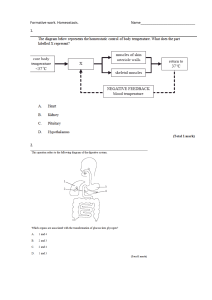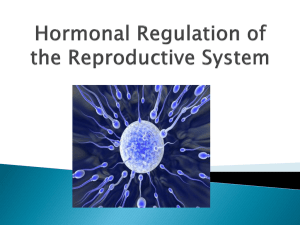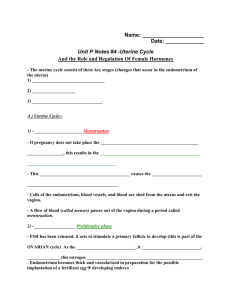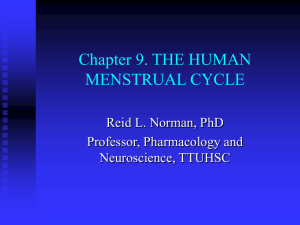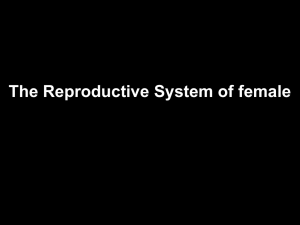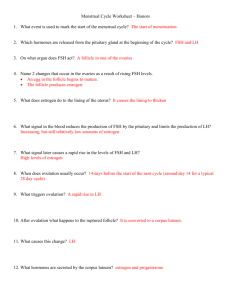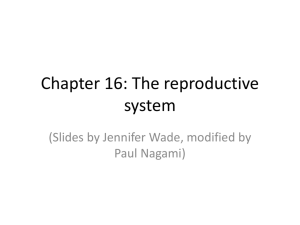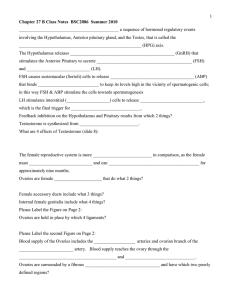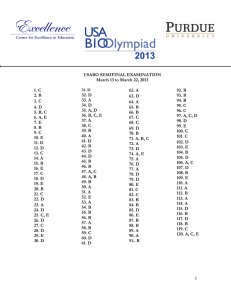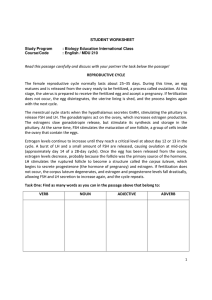Hormone Cycles
advertisement
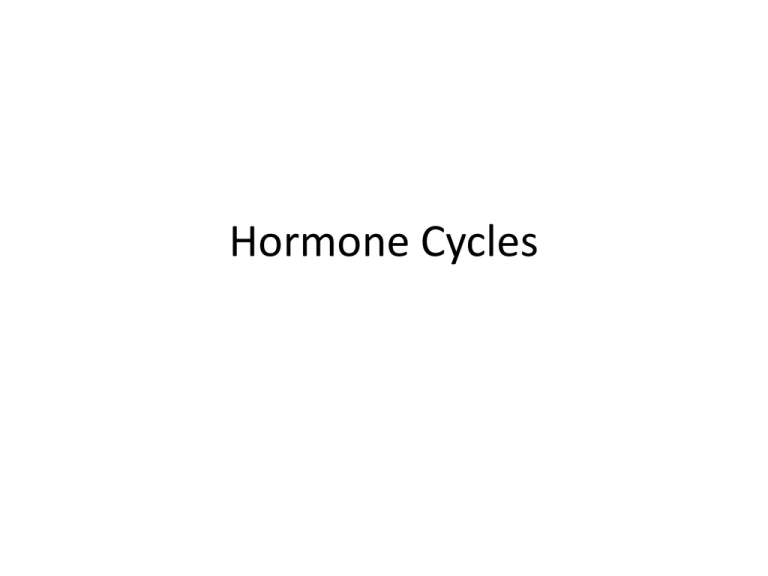
Hormone Cycles Pg. 394 Male Hypothalamus releases GnRH GnRH causes the pituitary to release: • Male FSH which : – Acts on sperm producing cells – Nurse cells (Sertoli) release peptide hormone which slows/prevents FSH production • Male LH which: – Acts on interstitial cells to produce testosterone which increases sperm production – High levels of testosterone decrease GnRH output – This slows the release of LH Pg. 398 Female 1. FSH is secreted by the pituitary gland(day1)menstruation starts 2. About 1000 follicles in the ovary start to develop but only one matures (goes through oogenesis) 3. The developing follicle secretes estrogen 4. Estrogen causes :1) the uterine lining to thicken with mucus and blood vessels 2) secondary sex traits Lasts 10-14 days 5. High levels of estrogen in the blood cause 3) the pituitary gland to stop releasing FSH (Negative feedback) 6. Now the pituitary starts secreting LH 7. LH levels (when high) cause: 1) ovulation about day 14 8. LH causes 2) the ruptured follicle to fill with cells and fluid forming a yellow body called the corpus luteum 9. The corpus luteum secretes progesterone which : 1) maintains the lining of the uterus (pregnancy hormone). It also 2) prevents new follicles from developing by inhibiting the release of FSH Lasts 10 to 14 days 10. if the egg is not fertilized, secretion of LH stops as the corpus luteum breaks down and the level of progesterone drops 11. the lining of the uterus is shed 12. As menstruation begins the levels of estrogen and progesterone are at their lowest so the pituitary starts to secrete FSH so back to Day 1. • Cowper’s Gland – mucus and fluids which help protect the sperm from acids – cleanses the urethra • Seminal vesicles – produce fructose for energy to fuel the mitochondria of the sperm • Prostate Gland – produces an alkaline buffer to neutralize the strong acid vagina
